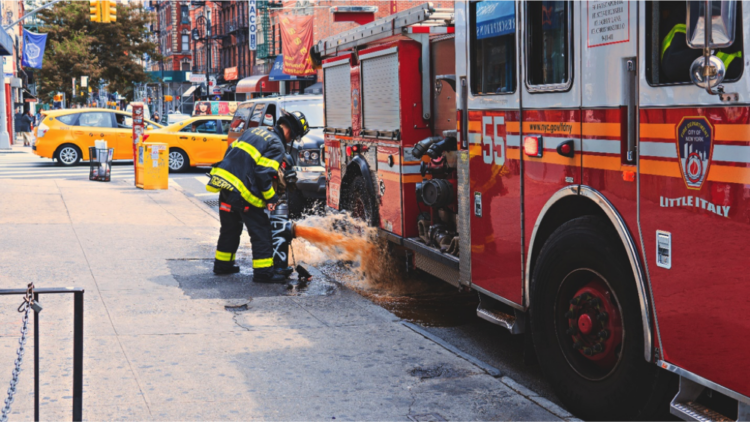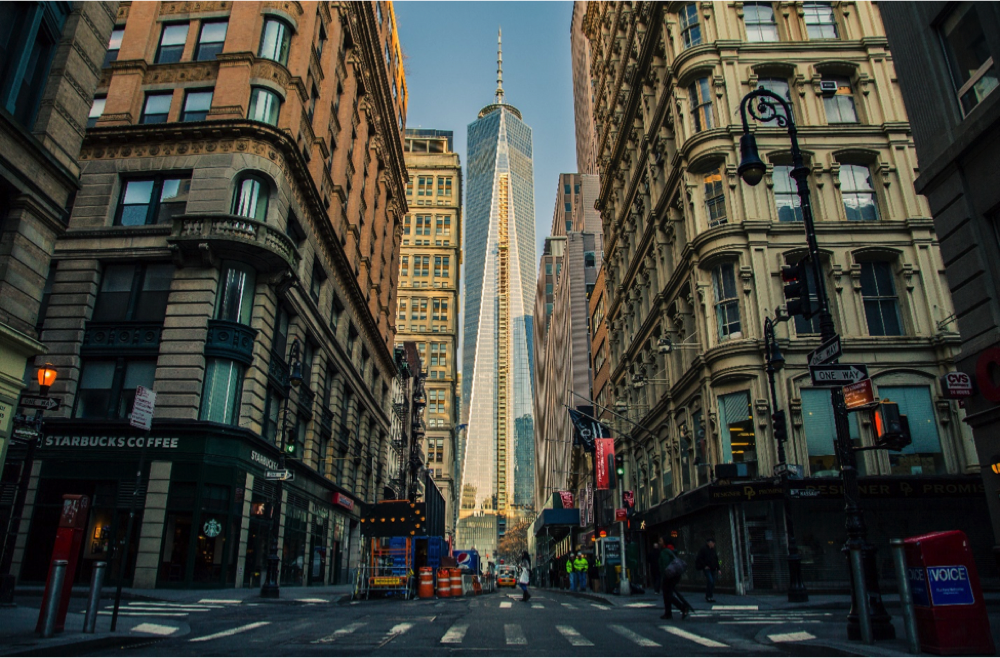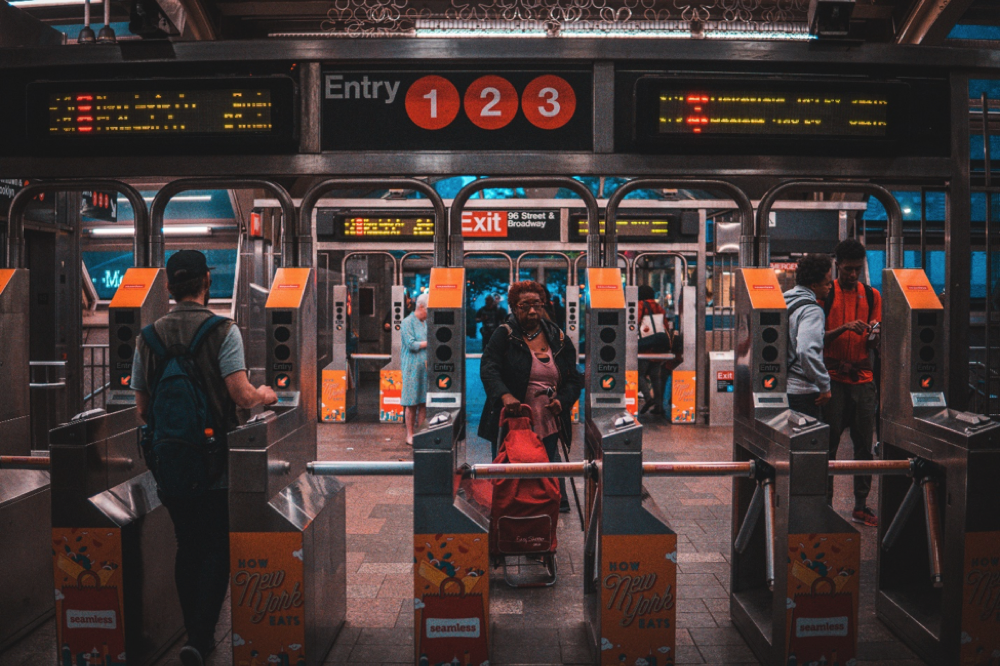It really is mind-boggling how big the city is. More than 8 million people are packed into 300 square miles. Over 1 billion annual subway riders, 263 street blocks, and 237 skyscrapers are all packed together into the concrete jungle known as New York City.
Have you ever wondered how the city stays organized, efficiently run, and safe? In many industries, both private and public, RFID technology provides a huge benefit in keeping the city running smoothly. Here are a few ways RFID does it.
Keeping FDNY Firefighters Safe
There are over 15,000 firefighters in New York City. They respond, on average, to nearly half a million emergency calls every year. On September 11th, 2001, the FDNY lost 343 of their own. Prior to 9/11, the FDNY simply relied on a paper/carbon-copy ride list to keep track of who was or wasn’t present during emergencies. The events of 9/11 motivated the FDNY to find a more reliable way to account for all their firefighters in an emergency.
The FDNY partnered with the U.S. Naval Research Laboratory (NRL) Space Systems to deploy an RFID system that can track the proximity of a firefighter. At the heart of the system are active RFID tags that track the location of FDNY firefighters. Tags are sewn into firefighter jackets, so firefighters never forget to have the tag on them. The active RFID tag chirps out a signal every few seconds that relays its location to an RFID reader attached to the fire truck. The tag reader is activated as soon as the truck’s ignition is turned. So when a firetruck is dispatched, they know exactly who was on which truck. When the firefighters are finished with a task, the truck and RFID reader acts as a rally point and checks who is present. The system can detect who has and has not returned when the tags are read again by the truck, ensuring nobody is left behind.
Building Skyscrapers
One World Trade Center, also known as the new Freedom Tower, is the latest addition to New York City’s skyline. It is the largest skyscraper in the Western Hemisphere and the 6th largest in the world. Construction took 7 years, there are over 100 floors, and RFID had a big hand in making the amazing building a reality.
Today, the Freedom Tower stands where the twin towers once stood. Part of building a new World Trade Center was to create a sturdy, blast-proof foundation. To set the foundation, active RFID tags were used in order to read the temperature of concrete during its drying period. The RFID tag sensors helped construction workers keep the concrete at the right temperature as they built the blast-proof foundation. Maintaining the right temperature for the concrete is a vital element in building the foundation. The concrete dried over a period of weeks. Once completed, the base was set to build the 104-floor behemoth. The tower now stands at 1,776 feet tall, and it is the centerpiece to New York City’s illustrious skyline. And, we have RFID sensors to thank for it.
Organizing Citi Bikes
If you haven’t been to New York City in a while, perhaps you are unfamiliar with Citi Bikes. Now the largest bike sharing program in the US, Citi Bikes is New York’s public bicycle sharing system, started in 2013. The initiative has been sponsored primarily by CitiGroup, hence their name, and it has become a major project to help improve public health and decrease traffic congestion. Citi Bikes has been a big success for the city. According to Citi Bike, as of 2017, there are 130K annual subscribers. Citi Bike riders took an average of 38,491 rides per day in 2016, and the system reached a total of 50 million rides in 2017. So, where does RFID come in?
Citi Bikes are tagged with RFID and GPS units. With this capability, Citi Bikes now knows exactly where each bike is located in the city. This helps if you’re looking to find where the nearest bike is. But, Citi Bikes is much more than that. With the tags, they are getting tons of data about how the bikes are used. Thanks to RFID, Citi Bikes knows when their bikes are used most, how long they’re used for, and how often they are used. This gives them the information they need to ensure the right bike station is full of the right number of bikes. No wonder it’s been so successful – they got the data to back it up.
Keeping Artwork at the Metropolitan Museum of Art Safe
For any museum or art gallery, protecting the art and exhibits is a top priority. This is a unique challenge for the Metropolitan Museum of Art (the Met). In 2018 the Met set a new attendance record with more than 7.35 million visitors. That is a mind-boggling amount of people, but, for the most part, attendees are well behaved and rarely do any damage to the museum’s fine art. So, why would the Met need RFID technology to protect their priceless art pieces?
Many of the Met’s most prestigious works of art and artifacts are extremely old. And, their exposure to certain temperatures and environments are enough to cause severe damage. That’s why the Met is now using RFID tags to stay alert to changes in the environment of a specific room. The museum has employed RFID tags to The Cloisters – an area of the museum dedicated to medieval art. With RFID tags, the museum can get a better understanding of how the environment affects the pieces on display. Needless to say, doing so is worth every penny in order to keep their priceless artwork and artifacts in good condition.
Replacing Metrocards
In 1993, New York City subways started using the MetroCard. The card replaced the decades’ old subway token. The cards have helped alleviate problems the token had such as fraud and malfunctioning at the turnstile. Believe it or not, thieves would suck tokens out of the turnstile to get it back! So, MetroCards were a welcomed change in the City.
But, the MTA (Metropolitan Transit Authority) is looking to the future, and planning to replace those cards with something smarter, and faster. No more having to swipe your card. Instead, riders will utilize contactless turnstiles that interact with your smartphone or MetroCard embedded with an RFID tag. The new technology will likely decrease swiping errors. The MTA has plenty of logistics to work through, especially since they’ll need credit card companies on board. Their projected goal to start using smartcards is this year so be on the lookout for a new Metro experience very soon.







